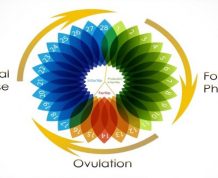During the course of your pregnancy, you will become familiar with several different pregnancy landmarks. Pregnancy landmarks are very distinct and clear, and follow certain rules regarding pregnancy development and the rate at which a pregnancy progresses. Read on for more info about pregnancy landmarks, what the most common ones are, and when you can expect them in your pregnancy. Claim Your 20 Free Pregnancy Tests – Click Here

Blood hCG levels of greater than 25 mIU/cc are usually one of the very first pregnancy landmarks that a woman will experience. This landmark usually occurs around ten days past ovulation, and about 24 days after a woman’s last period.

The very first pregnancy landmark that a woman usually notices on her own without a doctor’s help is a positive urine home pregnancy test. The first positive home pregnancy test is usually able to be detected somewhere around 12-13 days past ovulation, and around 26-27 days from a woman’s last period.

By using ultrasound technology, doctors are able to document the next pregnancy landmark. This is the presence of a 10mm gestational sac. On an ultrasound, this will just look like an empty sac, but it is an important pregnancy landmark. This 10mm gestational sac is usually visible at around 21 days past ovulation, or around 35 days after a woman’s last period.

The next major pregnancy landmark is the presence of the yolk sac, or embryo. This is when a doctor can see the gestational sac with the embryo visible inside it. This will look just like a small dot inside the gestational sac, but it is an important landmark. The yolk sac/embryo is usually visible at around 24 days past ovulation, or around 38 days from a woman’s last period.

The next pregnancy landmark is the crown-rump length measuring 4.5 mm. This means that the embryo measures 4.5mm in length, without counting the yolk sac or limbs. This major pregnancy landmark usually occurs at around 28 days past ovulation, or at around 45 days from a woman’s last menstrual period.

One of the most exciting and wonderful things for a mom to be is the moment that she sees her baby’s fetal heartbeat for the first time. This huge pregnancy landmark usually occurs at around 31 days past ovulation or at around 45 days from the woman’s last menstrual period. This is a really big landmark for a woman during her pregnancy, and the fetal heartbeat is usually able to be clearly seen by a transvaginal ultrasound at 6 weeks and 3 days from a woman’s last menstrual period.










Comments